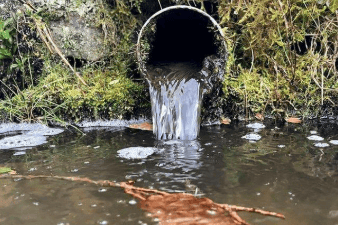Dŵr Cymru Welsh Water must make urgent and fundamental changes to its operations, according to regulator Natural Resources Wales (NRW), as the company records the highest number of sewage pollution incidents in ten years.
New data released on Friday shows that the company was responsible for a total of 155 pollution incidents during 2024 – 132 from sewerage assets and 23 relating to water supply.
While water supply incidents have dropped in recent years, sewage incidents are continuing to rise, increasing from 89 in 2022, 107 in 2023 and 132 in 2024. This represents a 42% increase in the last ten years.
Of the total number of incidents, the company was responsible for six serious (category one or two) incidents - a drop from seven last year. Five of these were from sewerage assets and were all category two.
Analysis over the last ten years shows that the main source of incidents come from foul sewers (423), storm overflows (168) and water treatment works (166).
Nadia De Longhi, Head of Regulation and Permitting from NRW, said: “We’ve seen a huge deterioration in the performance of Dŵr Cymru Welsh Water since 2020, and despite repeated warnings and interventions they’ve been unable to reverse this concerning trend.
“This has left us with no choice but to pursue a number of prosecutions against the company which have recently concluded. This is not the outcome we want, nor the best outcome for the environment – our priority will always be to bring companies into compliance and prevent environmental damage from happening in the first place.
“We continue to do everything we can to drive improvements, but Dŵr Cymru Welsh Water must address the root cause of these pollution incidents and take preventative measures before more harm is done to the water environment.
“We will be increasing our capacity for monitoring and auditing discharges, clamping down on unpermitted storm overflows and introducing tighter criteria for annual performance reporting. This will ensure we are receiving the best quality data about the impact of water company operations on the environment and can respond appropriately.”





Comments
This article has no comments yet. Be the first to leave a comment.